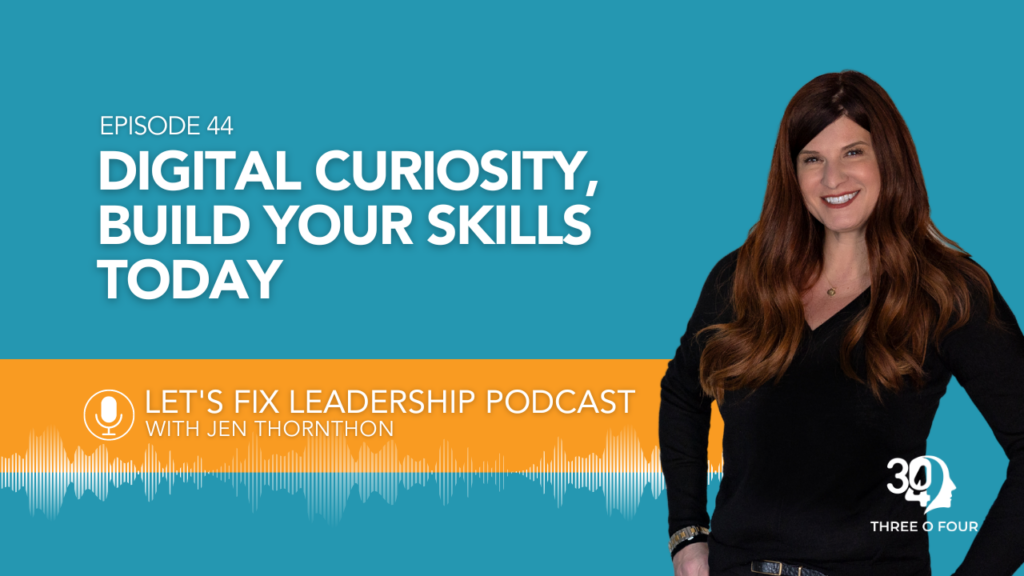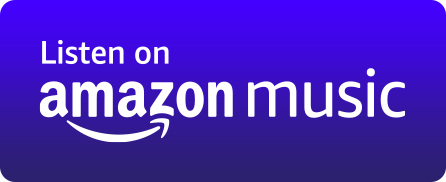0:00:00.9 Jen Thornton: Let's get curious about all things tech and digital.
[music]
0:00:08.3 JT: The landscape of business is changing radically, yet leadership is being taught the same old way it's always been taught. When the world is changing, it's time to bring our leadership styles along for the ride. Thanks to cutting-edge neuroscience, we now have access to new tools and new language that inspires action, collaboration, and innovation in the modern workplace. I started this podcast to bring you the best of these cutting-edge tools, exercises, best practices, and modern leadership strategies every single week. Whether you're a company leader, a corporate visionary, or an entrepreneur, this show gives you new insights into neuroscience and language of leadership, as well as practical steps and tips you can take back to the office, so you can lead your team in a powerful way, keeping your people happy and engaged while achieving your biggest goals, because no one has ever changed the world by doing things the way they've always been done.
0:01:04.3 JT: I'm your host, Jen Thornton. I'm a talent strategist, an executive coach, speaker, and the founder of 304 Coaching. Now, let's fix leadership. For those of you who've been around for a while, you know I love to think about competencies leaders need to manage today, but more importantly, how to manage into the future, those competencies that aren't in those fancy books yet. On this podcast, I've talked about the competency for synthesizing information, and I've also talked about the competency dynamic composure as a replacement to that outdated executive presence. If you missed those episodes, go back and check them out. The newest competency I've been playing around with is digital curiosity. When we are interviewing or talking with someone, we often think about what type of technology tools they're able to use to today. But I think that's limiting our views. Technology is moving faster than it ever has, and it's gonna continue to speed up.
0:02:02.1 JT: What we know how to use today, unfortunately, is gonna be outdated in a blink. To stay ahead of the innovation curve, as leaders, we have to be curious about what's next and more importantly, not afraid to try it out. Digital curiosity is what we need to stay on top of trends, be efficient, and create moments of innovation. Now, before we jump in on how to create behaviors around digital curiosity, let's define it. My current working definition is an eagerness to explore and understand the latest technology and digital trends. Show openness to experiment with ideas and learn new skills while encouraging others to do the same. Leveraging new technologies to drive innovation and business results.
0:02:53.7 JT: Now, let's build on our new found competency. If you focus on being a lifelong learner, just add digital and technology to the list of things you want to continuously learn about. There are so many ways to do this. Just Google what's new in technology and there'll be endless articles, or if you haven't tried AI yet, just type what's new in technology into ChatGPT, you'll be trying new technology while learning about new technology. Find someone in their teens or their 20s, ask them about what they're learning or using in the world of technology. Just go to YouTube and search what's new in technology. Sign up for a webinar. There are endless ways to continuously learn about new technology.
[music]
0:03:41.2 JT: Let's take a quick break from the conversation. Does your company need to prepare those upcoming leaders to take the reins? To learn more about our leadership academies and our coaching and to see if your company is a good fit for our transformation programs, visit 304coaching.com.
[music]
0:04:01.3 JT: Network widely. Ensure your network is full of individuals from all generations, all industries and different parts of the country or the world. Networking widely has so many benefits other than just keeping up to date with the newest technical trends. It allows you to learn so many new things while sharing your knowledge with others. Experiment, get excited about experimenting with new things, not only technology, but all things. Look for opportunities to try new platforms. Share your experiences with others even when they don't work out. Experimenting and sharing those experiments tells those around you, it's okay to try new things and it's okay to learn from them.
0:04:46.8 JT: Leverage data. Sign up for a demo and try something out. Don't be afraid to ask... To talk to other customers who've used that product. This expands your network and allows you to gather data as you research new platform and technology. Continuously learning, networking widely, experimenting and leveraging data is a great model for so many things we do as leaders. Try it when building your digital curiosity and try it in other areas of your life, too. Being digitally curious matters. It'll help you stay ahead of the curve as an individual and as a leader, and drive your overall business results. It'll foster a culture of innovation. Leaders who demonstrate digital curiosity set a tone that permeates through the organization. Having a culture of continuous learning and innovation is essential for growth and especially digital transformation.
0:05:44.7 JT: It'll enhance decision making. Digital curiosity enables leaders to make more informed decisions. By understanding the latest digital trends and data analytics, executives can make decisions based on insights rather than that old fashioned intuition. Leverage this mindset and skill to attract and retain talent. Today's workforce, especially Millennials and Gen Z, are digitally savvy and seek workplaces that embrace technology advancements. Leaders who are digitally curious are better equipped to create environments that attract this talent and retains the talent, and it will help you mitigate risk. Understanding the digital landscape helps executives foresee potential risk, whether that's cyber risk or business disruption models, any of those things.
0:06:35.9 JT: Digital curiosity, it's a competency we need today and we'll need it for tomorrow. Use the model of continuously learning, networking widely, experimenting and leveraging data, because no one ever fixed leadership by using yesterday's technology.
[music]
0:06:58.2 JT: Thanks for listening to Let's Fix Leadership. By hanging out with me today, you're already on your path. If you're looking to learn more and to see if your company is a good fit for our coaching and leadership education, then hey, visit 304coaching.com. If you got value outta this podcast, share it with a friend and it would mean the world to me if you would leave a thoughtful review and a rating on iTunes. Thanks again for listening, and I appreciate your work in fixing leadership.
[music]




